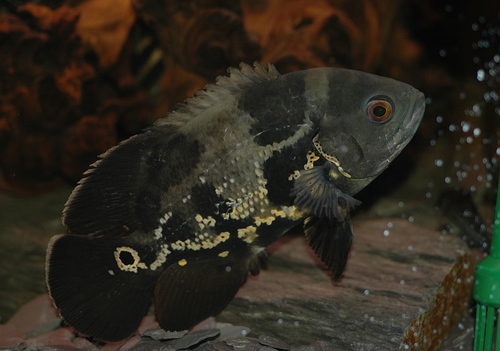
Oscar
The Atlantic bluefin tuna (Thunnus thynnus) is a magnificent and highly migratory species renowned for its size, speed, and commercial value. It plays a crucial role in the marine ecosystem and faces significant conservation challenges.
10 20 years
Lifespan
30 - 40 cm
Length
Least Concern
Conservation Status
5 km/h
Swimming speed
Omnivorous
Diet
Local Migration
Migration
Appearance Overview
The Atlantic bluefin tuna is a large, streamlined fish with a metallic blue body and a silvery underside.
Coloration
Dark metallic blue on top, silvery underside
Body Shape
Torpedo-shaped, built for speed and endurance
Fins
Two dorsal fins, the first is depressible; relatively small pectoral fins
Length
Up to 13 feet (4 meters)
Weight
Up to 2,000 lbs (907 kg)
Diet
Carnivorous, feeding on a variety of fish (such as herring, mackerel, and hake), squid, and crustaceans.
Feeding Behavior
Highly active predator, using speed and agility to hunt. They are also known to cooperate in groups to herd and capture prey.
Social Behavior
Forms large schools, particularly during migration. Schooling behavior is complex and can vary with age and size.
Commercial Relevance
Extremely high value, especially in the sushi and sashimi markets. Individual fish can be sold for tens or even hundreds of thousands of dollars.
Conservation measures
International fishing quotas, seasonal closures, minimum size limits, and efforts to reduce bycatch. Monitoring and research programs are ongoing.
Status
Endangered (Varies by population segment, some are considered 'Near Threatened' or 'Least Concern', but overall the species is depleted)
Threats
Overfishing (historically the primary threat), bycatch in fishing gear, climate change affecting prey distribution and spawning grounds, and habitat degradation.
Habitat Distribution
Depth Range
0-1,000 meters (Surface to considerable depths, often following prey)
Geographic Range
Atlantic Ocean, Mediterranean Sea, and formerly the Black Sea. Distinct populations exist in the western and eastern Atlantic.
Preferred Environment
Temperate and subtropical waters; pelagic (open ocean) and coastal environments.
Reproduction and Life Cycle
Breeding Habits
Spawns in warm waters, primarily in the Mediterranean Sea and the Gulf of Mexico. Spawning occurs in specific areas and seasons.
Development Stages
Eggs are pelagic (free-floating). Larvae develop rapidly, feeding on plankton. Juveniles grow quickly, reaching significant size within the first few years.
Fecundity
Highly fecund; a large female can produce up to 30 million eggs per spawning season.
Maturity Age
Matures relatively late, typically between 4-8 years, although this can vary between populations.
Faqs about Oscar
How long do Atlantic bluefin tuna live?
Atlantic bluefin tuna can live for up to 40 years, although this is rare due to fishing pressure.
How fast can Atlantic bluefin tuna swim?
They are among the fastest fish in the ocean, capable of bursts of speed up to 40-60 mph.
Can Atlantic bluefin tuna stop swimming?
No, they must swim continuously to breathe and stay afloat. They have a specialized circulatory system that helps them maintain a body temperature higher than the surrounding water.
Are Atlantic Bluefin Tuna warm-blooded?
Atlantic bluefin tuna are warm-blooded, which is unusual for fish. This allows them to maintain higher activity levels and survive in colder waters.
Do Atlantic bluefin tuna migrate?
Yes, they undertake long migrations across the Atlantic Ocean, often traveling thousands of miles between feeding and spawning grounds.
Copyright @ Nature Style Limited. All Rights Reserved.
 English
English